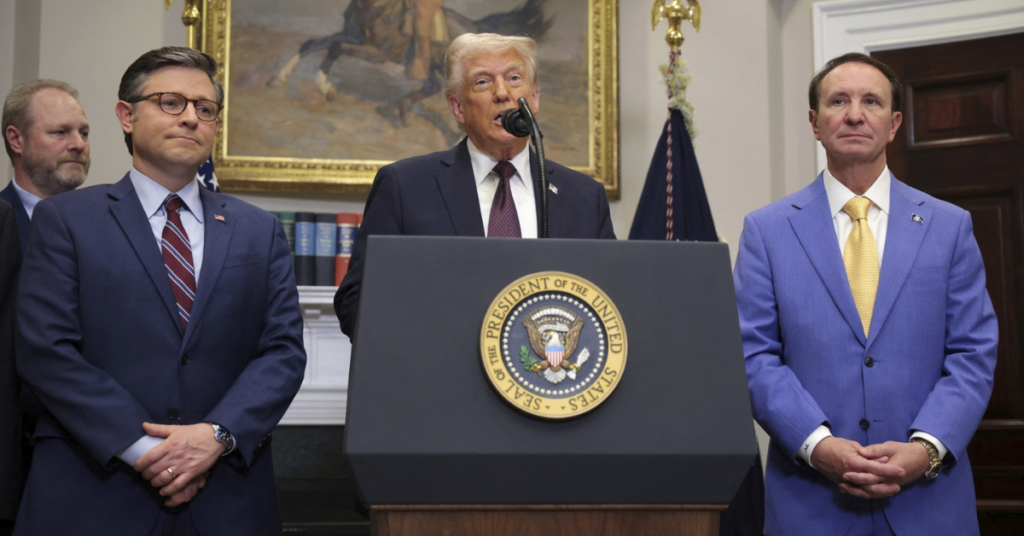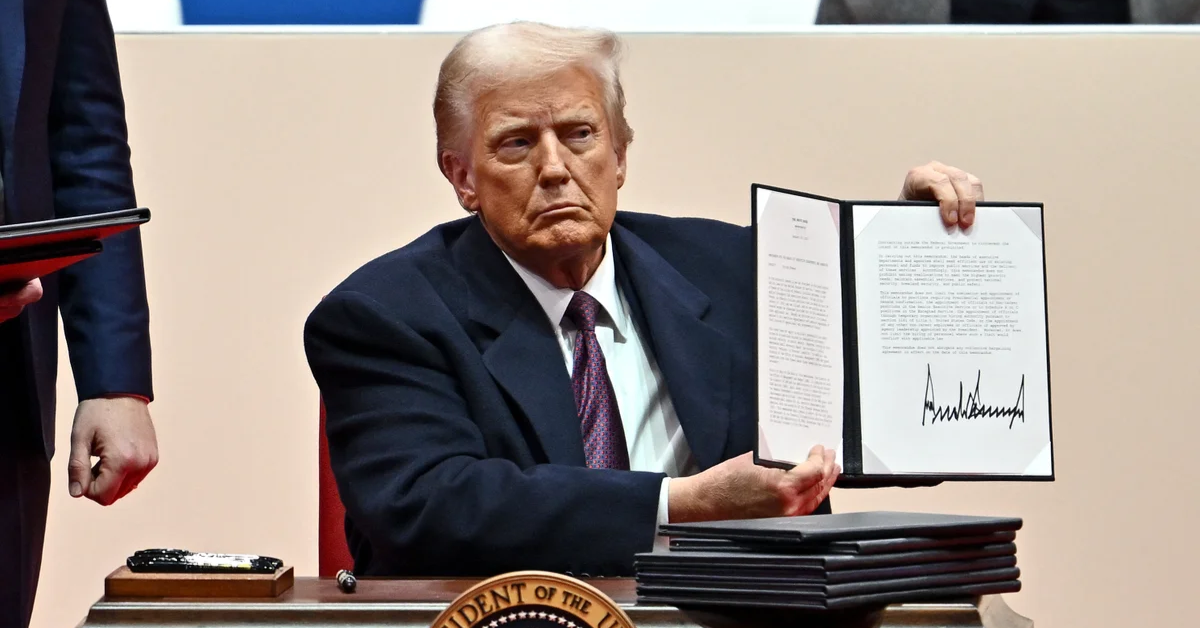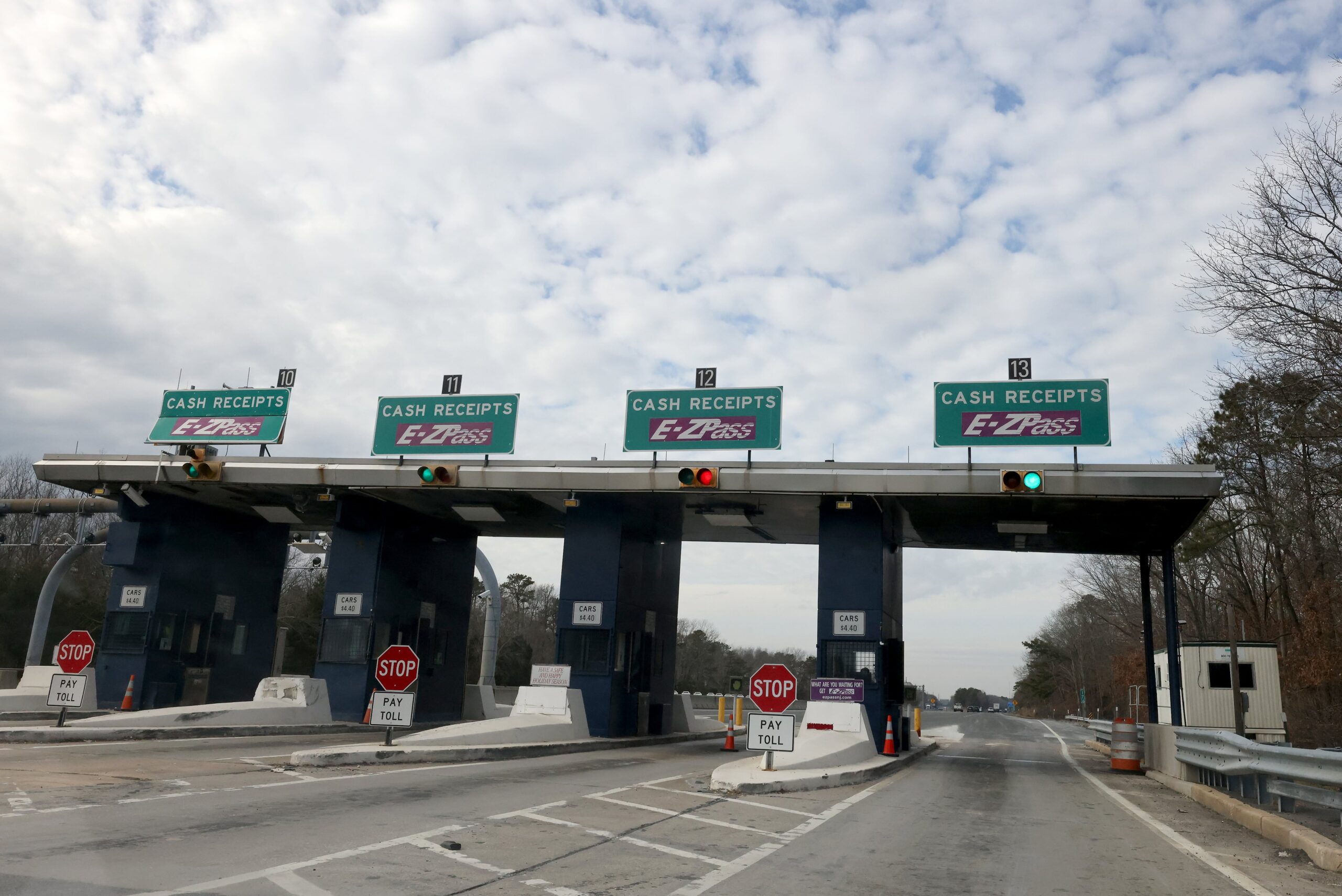In a major move to safeguard the nation’s economic interests, US President Donald Trump has declared a state of emergency to strengthen the economy and national security. The announcement came during a White House briefing, during which Trump emphasized the need to address trade imbalances that have negatively impacted the country for years.
In a speech delivered at the Rose Garden, Trump stated that ongoing foreign trade practices and economic policies have created a national emergency. He outlined his decision to use his executive power to impose new tariffs aimed at improving the US’s economic position globally and shielding American workers from unfair competition.
The US has been grappling with a significant and ongoing trade deficit, especially in the goods sector. According to Trump, this imbalance has led to the decline of the country’s manufacturing sector, reduced the incentives for growth in domestic production, and disrupted essential supply chains. Furthermore, the US has become increasingly dependent on foreign adversaries for critical components, particularly in its defense industry.
National Emergency Declaration
Trump is leveraging his powers under the International Emergency Economic Powers Act (IEEPA) of 1977 to address the pressing trade deficit issue. He explained that this trade imbalance is the result of unfair trade practices such as currency manipulation, high value-added taxes (VAT) in other countries, and a lack of reciprocal trade agreements.

In response, the president has decided to implement a sweeping 10% tariff on goods from all countries. This move aims to put the US on a more equal footing in global trade. The tariff will come into effect on April 5, 2025, starting at 12:01 a.m. Eastern Standard Time.
However, President Trump has also indicated that he will impose specific, reciprocal tariffs on countries where the US has the largest trade deficits. This will mean that certain nations will face higher tariffs, while others will only be subject to the base tariff. These targeted tariffs will be implemented on April 9, 2025, at 12:01 a.m. Eastern Standard Time.
The Aim of Tariffs
Trump made it clear that the tariffs will remain in place until the trade deficit issue is resolved or until the actions taken by other countries align more fairly with US interests. The president emphasized that the goal of these tariffs is not just to protect the US economy, but also to ensure fair trade practices for American workers and businesses. He also noted that the tariffs are necessary to reduce the trade deficit, which he has deemed a national emergency.
“These tariffs will remain in effect until such a time as the threat posed by the trade deficit and underlying nonreciprocal treatment is resolved or mitigated,” the White House briefing stated.
Trump’s Economic Strategy
The White House also pointed to studies that suggest tariffs can be an effective tool to reduce national security threats. By imposing these tariffs, the Trump administration hopes to achieve broader economic and strategic objectives, ensuring that the US is not at a disadvantage in global trade. According to Trump, this will help preserve American jobs and prevent other nations from taking advantage of the US economy.
While Trump’s plan has gained support from those who believe it will boost the country’s manufacturing and economic position, critics argue that it could lead to a trade war, escalating tensions with key allies and trading partners.
The US Trade War Escalates
This declaration of a state of emergency follows other significant tariff actions taken by the Trump administration. Just a day earlier, on April 2, President Trump signed an executive order imposing reciprocal import tariffs on all countries. These new tariffs will include a 25% levy on all foreign-made vehicles entering the US, effective from midnight on April 2 to 3. Additionally, a 10% tariff will be applied to imports from Ukraine.
In response to these new tariffs, the European Union (EU) has made it clear that it is prepared to close its market to American goods. The EU’s decision to retaliate with its own tariffs signals a potential escalation in global trade tensions, which could have widespread consequences for both the US and its trading partners.
Global Reactions and Impact
The global response to President Trump’s trade policies has been mixed. While some countries, particularly those with large trade surpluses with the US, have voiced concerns over the impact of these tariffs, others have expressed understanding of Trump’s desire to protect American interests. However, many experts warn that this could mark the beginning of a broader trade war, with economic consequences that could ripple across the global economy.
Trade wars can lead to increased consumer costs, supply chain disruptions, and a general slowdown in global trade. The full impact of these tariffs will likely unfold over the coming months as countries respond to the US’s aggressive stance on trade.
Trump’s economic strategy, as ambitious as it is, aims to reshape US trade policy to prioritize the country’s long-term financial health over short-term gains. However, it remains to be seen whether the US’s trading partners will accept these new tariffs without retaliating and how the global economy will adjust to the changing trade landscape.
Conclusion
President Trump’s declaration of a state of emergency and the imposition of tariffs mark a significant shift in the US’s approach to trade. By leveraging his executive powers, Trump is hoping to level the playing field for American businesses and workers, ensuring that the US can compete fairly on the global stage. However, the escalating trade tensions and the potential for a full-blown trade war suggest that the coming months could be critical in shaping the future of international trade relations.
Disclaimer: This article has been meticulously fact-checked by our team to ensure accuracy and uphold transparency. We strive to deliver trustworthy and dependable content to our readers.








